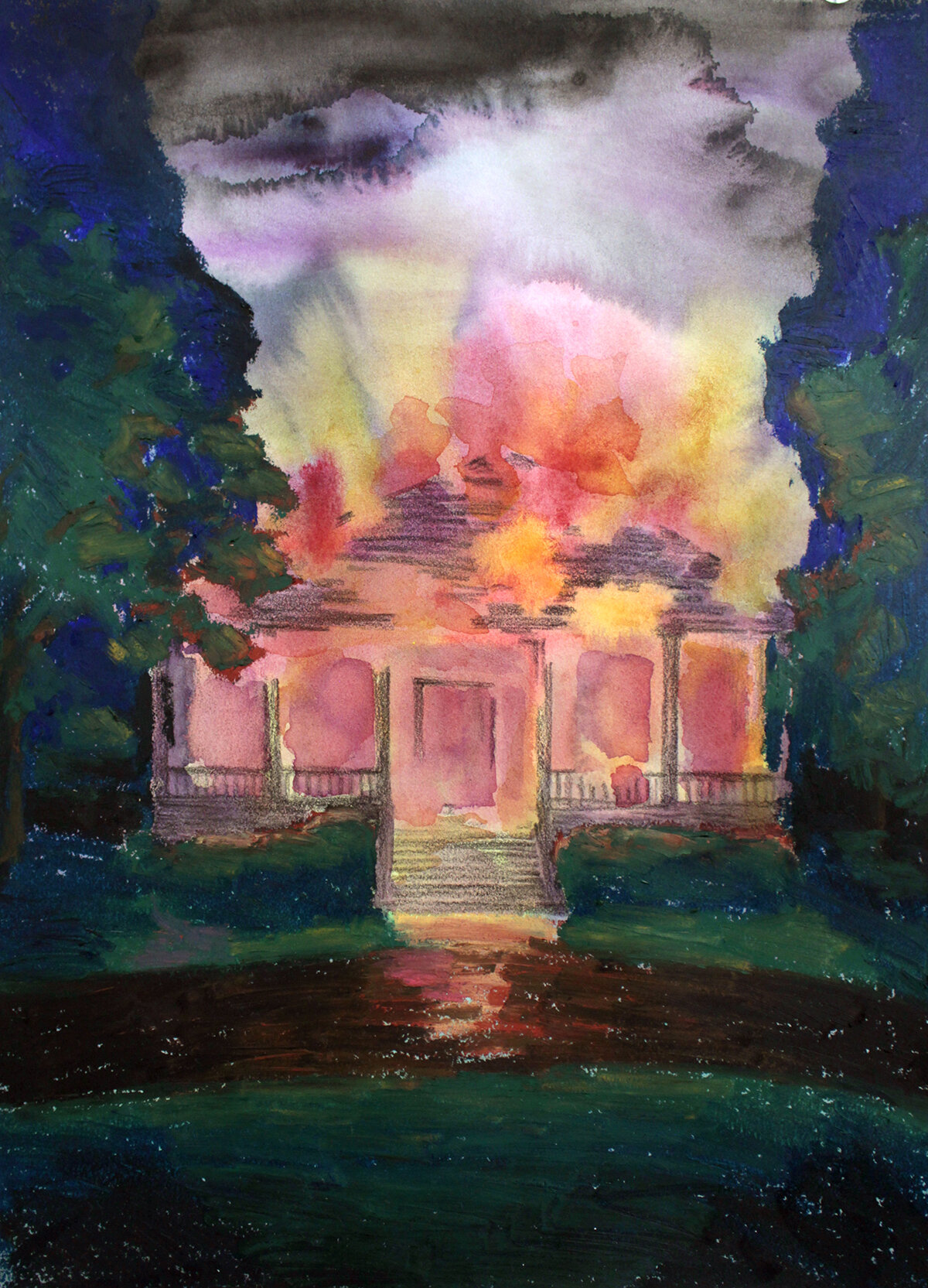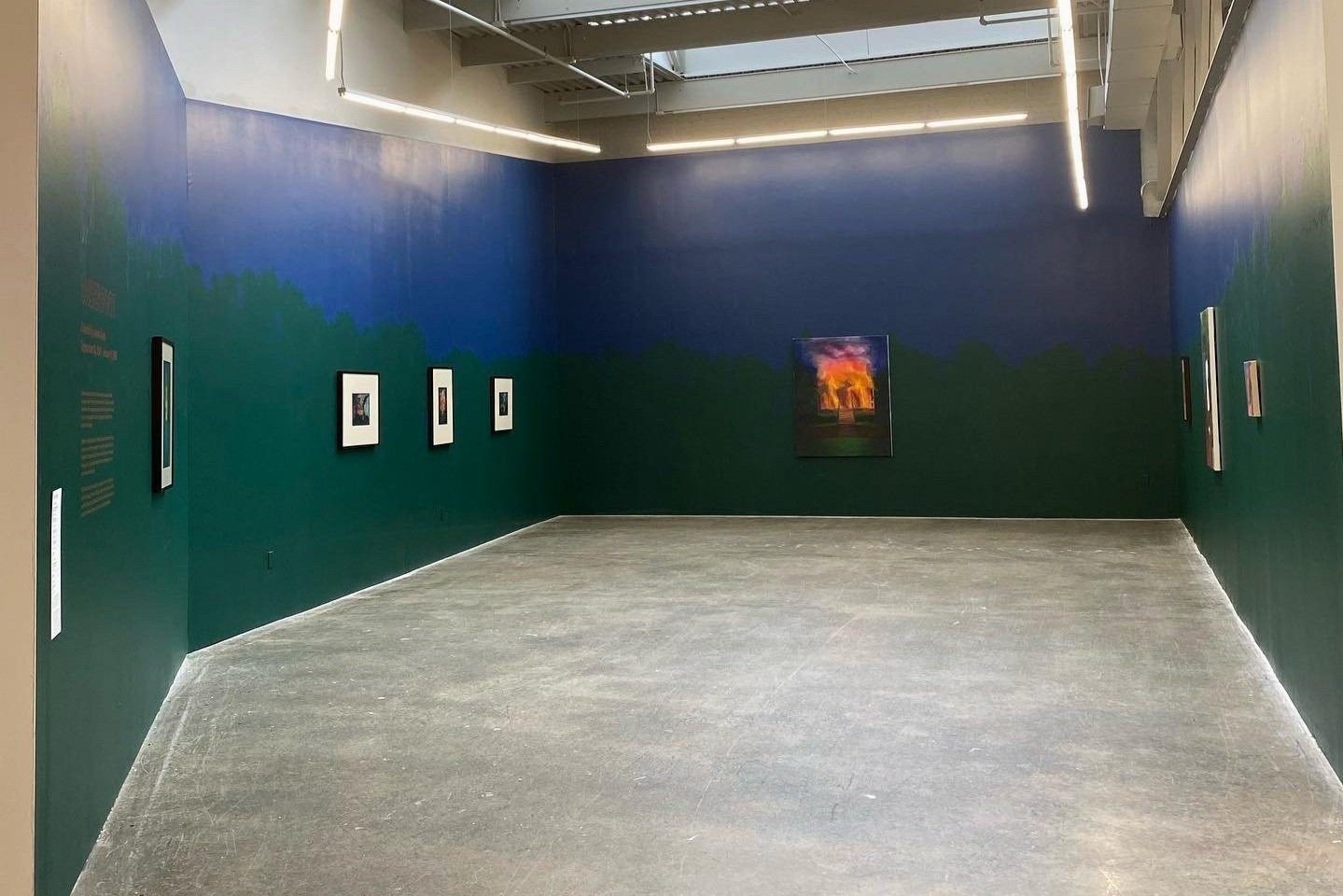Atlanta Contemporary presents Underfoot, a solo exhibition of work by Adrienne Elise Tarver, curated by Jamie Steele on view in Gallery 2 from September 18, 2021 through January 9, 2022.
Underfoot explores Tarver’s relationship to place and familial origins, particularly her multi-generational family roots in Georgia. The painting Namesake and the accompanying works on paper depict a house that still stands on a former Georgia plantation. As the title suggests, it is a place that once carried her family name.
Underfoot considers this place--particularly the land, which holds more history than what was written or recorded. From the land, Tarver seeks to extract lost stories and fictionalize the history that can never be fully known. In Namesake, the house burns, like the Tower card of the tarot, a foreboding omen, but one that makes space for new life.
While the destruction of a building--by burning, in this case--might remove it from the landscape, the earth still holds the roots of that construction underfoot, holding the memory of the people who built, lived, and died in that place. The name of the place is no longer important, but the significance remains.
Underfoot, solo exhibition at Atlanta Contemporary, Atlanta, GA from September 2021 until January 9, 2022.
"In A New Body Of Work, Adrienne Elise Tarver Sets A $21 Million Plantation On Fire"
Forbes Magazine
By Brienne Walsh
Published on October 28, 2021
When the lockdowns due to the pandemic began in March of 2020, Adrienne Elise Tarver was living in Atlanta, Georgia. She couldn’t go to her studio, so she began painting small works in her apartment inspired by tarot cards, which have been used for divination purposes since the 15th century. “The world felt like it was ending, and tarot tells the future, so the idea of thinking about the future felt really comforting to me,” Tarver says.
Concurrently, Tarver was doing a lot of thinking about her own family history. Her paternal family is from Georgia, she spent part of her childhood in the state and her parents had retired there after raising her and her brother in Illinois. “I thought about being a black person in the South,” she says. “I’m in love with the landscape, the oak trees and Spanish moss and kudzu, but all of that is also evocative of the terrible nightmare of slavery. You can’t really remove the place from this double meaning.” She began doing some research on her family name, and found that there was a town named Tarversville — and an extinct one named Tarver — in Georgia. “In the history of America when a black person has a name that connects to a place it's generally because of the plantation where their ancestors were enslaved,” she says.
Her research led her to photographs of the former Tarver Plantation, which was owned by Henry Tarver from 1850 until 1897. Hundreds of slaves farmed his 5,000 acres of land. The plantation house, which features 16-foot-high ceilings and a driveway lined with live oaks, was recently refurbished, and is currently on sale for over $21 million. The listing mentions that sweet potatoes were grown on the estate to feed Confederate troops, and that it was used by a Kentucky horse breeder as her winter retreat until her death in 2013. No mention is made of the people who lived and worked on the land. Tarver printed out a photograph of the house and placed it on the wall with her studio alongside of some of her tarot card drawings. There, she considered their relationship to each other, and her own relationship to the past, and to the future.
In traditional decks of tarot, there is always a tower card that depicts a tower being struck by lightning and engulfed in flames. The “tower” symbolizes a moment of great destruction, but also, rebirth. “Looking at the Tarver plantation, I realized it needs to go up in flames,” she says. She began painting the plantation house not restored, but instead, engulfed in fire…








